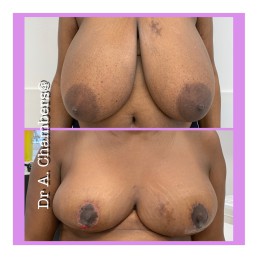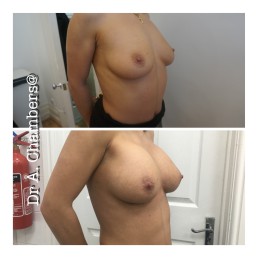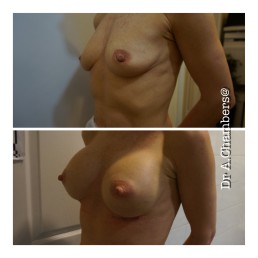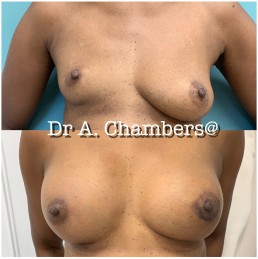Female breast Surgery
A breast lift, also known as mastopexy, raises saggy breasts by removing excess skin and tightening the surrounding tissue to reshape and support the new breast contour.
Sometimes the areola becomes enlarged and stretched over time, and areolar diameter can be reduced during breast lift.
A mastopexy aims to rejuvenate female figure with a breast profile that is more youthful and uplifted. A woman’s breasts often change over time, losing their youthful shape and firmness. These changes and loss of skin elasticity can result from:
- Pregnancy
- Breastfeeding
- Weight fluctuations
- Aging
- Gravity
- Heredity
Women, who are suitable for breast lift surgery must:
- Physically be healthy and maintain a stable weight
- Be a non-smoker
- Be bothered by her breasts sagging or have lost shape and volume
- Have breasts with flatter, elongated shape or are pendulous
- Have nipples that fall below the breast crease or nipples and areolas point downward
- Have stretched skin and enlarged areolas
- Have one breast is lower than the other
Breast lift surgery does not significantly change the size of female breasts or round out the upper poles of breasts.
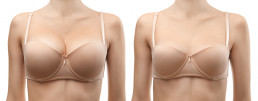
Breast augmentation (augmentation mammoplasty)
For a fuller and larger bust breast augmentation surgery can be performed using implants or fat grafting. This procedure can also restore breast volume lost after weight reduction or pregnancy, achieve a more rounded breast shape or improve natural breast size asymmetry.
What is breast augmentation is aimed
- Increase fullness and projection of breasts
- Improve balance of breast and hip ratio (closer to hour glass contour)
- Enhance patient’s self-image and self-confidence
Breast implants may also be used for breast reconstruction after mastectomy or injury.
Breast augmentation is a deeply personal procedure, and only should be done if a patient desires it, not for fulfillment of someone’s preferences .
A candidate for breast augmentation must:
- Be physically healthy and not pregnant or breastfeeding
- Have realistic expectations
- Have breasts are fully developed
- Be bothered by the feeling that her breasts are too small
- Be dissatisfied with her breasts losing shape and volume after pregnancy, weight loss or with aging
- Be unhappy with the upper part of her breast appearing deflated
- Has breasts which are asymmetrical
- Has one or both breasts that failed to develop normally or have an elongated shape
Breast reduction
Is also known as reduction mammaplasty, is a procedure to remove excess breast fat, glandular tissue and skin to achieve a breast size more in proportion with patient’s body and to alleviate the discomfort associated with excessively large breasts (macromastia).
Disproportionately large breasts can cause both physical and emotional distress for patients. Patients with macromastia may experience physical discomfort (back and neck pain, abnormal postures) resulting from the weight of their breasts. The resulting pain can make it challenging for some patients to perform common physical activities. Along with the physical ailments of macromastia, some patients may suffer from emotional distress or more significant mental health problems as a result of their large breasts.
Although breast reduction is often performed to address medical issues, patients who do not have the symptoms of macromastia but are unhappy with the size of their breasts can still pursue breast reduction as an aesthetic procedure. Patients choosing to undergo breast reduction surgery for cosmetic reasons may cite any number of factors, including social stigmas and wardrobe concerns.
A candidate for breast reduction surgery must:
- Be physically healthy
- Have realistic expectations
- Be non-smoker
- Must be bothered by feeling that her breasts are too large
- Have breasts size and weight that limit her physical activity
- Experience back, neck and shoulder pain caused by the weight of her breasts
- Have shoulder indentations from her bra straps
- Have skin irritation beneath the breast crease

